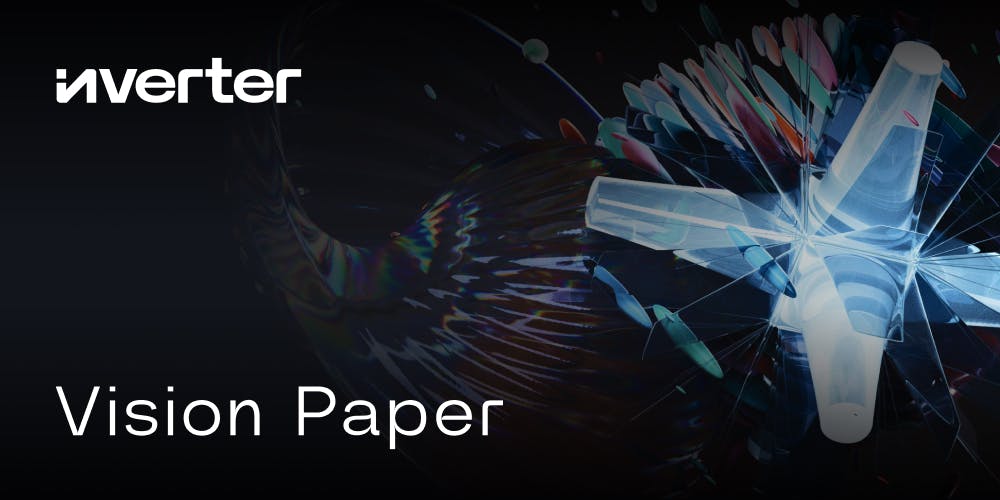

9 min read

Tokens, from their means of issuance to the systems they coordinate, can operate as infrastructure for different kinds of currencies and institutions built using blockchain technology. As institutions shape social outcomes by defining the incentives and constraints for how people participate in an economy, these tools can empower anyone to re-think and re-design these systems, enabling citizens to direct the evolution of their societies. By democratizing mechanism design on top of permissionless blockchain networks, tokens have the potential to invert the traditional power structures of institutional design in favor of bottom-up discovery that is more sovereign and adaptive.
At its core, tokenization promises humanity an alternative path to mediate and influence value flows in an economy. Initially, tokens made permissionless blockchain networks possible by introducing a digital asset class that incentivizes collaborative participation to secure information on the blockchain. Game-theoretic policies direct the issuance and distribution of these assets without a centralized body to reward the key activities that ensure a blockchain network’s survival, such as block production and cryptographic encryption. As a result, the successful launch of blockchains through this novel form of economic security has afforded the world’s citizens a distributed, permissionless, and immutable computing network. Today, tokens power the ownership structures and economic policies across different layers of blockchain infrastructure protocols, decentralized applications, intellectual property, real-world assets, currencies, and whole crypto-economically enhanced economies. And yet, these tools are just the first steps of an ever-expanding range of economic relations that can be facilitated by tokens - the scope of which is virtually limitless.
By virtue of their global accessibility and disintermediation of collective trust agreements, tokens enable an open design space for builders all around the world to design and implement the economic coordination systems they want to live in. Tokens make it possible to convert assets and packages of rights into digital representations and imbue them with policies in a way that simplifies their issuance, distribution, utilization, and governance at a global scale. This alternative path to designing the future of our societies contrasts sharply with the limitations of bureaucratic red tape and insufficient institutional capacities that stifle people’s creative potential in our current 21st-century information economy.
Despite the vast potential of tokens to reimagine economic systems and institutional frameworks, however, the current design space is disappointingly unsophisticated. Few mechanisms exist today for issuing and distributing tokens in a dynamic, programmable way. Consider the downsides of current token designs:
The crucial barrier to innovating on token designs is that developing custom token logic requires significant technical expertise and resources that many projects cannot afford. The absence of composable frameworks that allow experimentation without heavy resource commitments into building everything from scratch further stifles innovation, leading to a fragmented ecosystem of isolated mechanisms. Moreover, the tools required to design advanced functionalities in tokenomics are scarce, difficult to access and complex to use. Consequently, the majority of Web3 projects avoid advanced token designs and treat token economies as a matter of organizing vesting schedules and ensuring enough liquidity to sustain the flooding sell-pressure from token unlocks. Advanced token models, such as dynamic issuance curves, largely remain a domain of well-resourced Layer 1s and blue-chip protocols like Ethereum, Filecoin, and Balancer, while the rest of the projects are left out of utilizing the full capabilities of tokenization.
As we hone in on a token’s lifecycle, we can observe the foundational role of dynamic issuance to make tokens more effective, efficient, and expressive. When we look at the real-world as inspiration for tokens—government fiat, community currencies, mutual credit, community asset vouchers, and loyalty programs—we observe that tokens inherently begin their journey at issuance. It is in this initial phase that the groundwork for their wider utility and application is established. With this foundation, tokens can be capable of adapting to ever-evolving market conditions and extending capabilities based on new goals while maintaining coherence and sustainability throughout their lifecycle. Such dynamism unlocks the full potential of tokenization and can foster a future where blockchain genuinely transforms economies and coordination systems worldwide. With this realization, Inverter emerges as a protocol to enable fully programmable tokens.
Inverter provides a modular stack for Primary Issuance Markets (PIM) with extendable logics. PIMs employ algorithms that can dynamically issue tokens based on real-time data and market conditions, tailored to meet specific goals and KPIs relevant to each token’s custom use case. Consequently, dynamic supply tokens can transcend the limitations of static digital assets to become adaptive participants in the intricate economic systems they help create and sustain.
Due to their ability to dynamically optimize issuance for specific goals, PIMs introduce practical benefits that directly counteract prevailing issues in the tokenization landscape:
Primary Issuance Markets can be optimized for any scale of token economy, from blockchains and startups to large enterprises and nationwide business networks. Inverter’s PIM stack is designed to enable projects to seamlessly configure and operate the entire lifecycle of their token economies according to their unique requirements.

The core pillar of Inverter’s PIM stack lies in its modular design, which ensures that each component—from token issuance to utility management—can be customized independently yet interoperate seamlessly:
Inverter’s modular design approach aims to address the significant barriers that must be overcome to lower the accessibility barriers of cost and complexity in order to realize the true potential of tokenization. With its PIM stack, Inverter offers a comprehensive back-office solution for designing, parameterizing, and operating token economies without the need for custom development. It provides access to an out-of-the-box library of quality-assured smart contracts with high-security standards and acts as a connecting layer for the novel mechanism primitives within the ever-expanding open-source Web3 ecosystem. We seek to liberate a design space for experimenting and innovating with token economies that will power the next generation of blockchain applications.
Inverter is nearing its birth. It will provide the ground on which to build a diverse range of applications and economies, from tokenization verticals as base-layer blockchains and dApp tokens to community currencies, from IP-NFTs and creative work to real-world assets and cooperatives, from micro-credit insurance pools to tokenized invoice-based SME receivables, and more.
The tools that we shape, shape us in return. Tokenization has the potential to embed dynamic instruments of economic policy and incentive design into assets that will become an active force in the economies people choose to live in. Inverter strives to create strong and unified ecosystem for token design with its robust infrastructure and open library to make the powers of tokenization accessible.
We can realize this future only through positive-sum collaboration. Mechanism designers and developers can turn their token mechanisms into reusable and composable building blocks through Inverter. For Web3 protocols that are innovating towards new primitives of financial cooperation, Inverter protocol can act as connective layer to facilitate an interoperability standard for projects to seamlessly integrate novel web3 technologies in accordance to their unique needs. Design agencies, researchers, and data scientists can build modeling & simulation tooling into Inverter’s open-sourced SDK to allow people to make sense of the powers and capabilities of the tools they have access to. Thus, we can empower builders to dare to innovate and experiment across the fronters of tokenization applications for meaningful purposes by providing an open design space relieved relieved from the overbearing costs and expertise.
As we embark on this journey together, here are some great ways to stay connected and informed about everything related to Inverter and the PIM stack:
This article was authored by Ataberk Casur and Jeff Emmett with contributions by Alp Ergin, Pablo Carra, and Yavuzhan Zaman.
Special thanks to Patrick Rawson (Ecofrontiers), Livia, Eric Siu and Cem Dagdelen for their thorough reviews and feedbacks.